In an era where pragmatism is redefining friendship and hostility among nations, the case of the Indo-Russian relationship holds a peculiar spot. Over the past seven decades, their bilateral ties have evolved into a stage where it can be dubbed a “trusted partnership”, especially in defence and strategic cooperation. With the shifting balance of power and the unprecedented growth of the Chinese supply chain in the region, both countries were determined to advance their economic cooperation in all possible ways. Therefore, enhancing trade has been given key priority by both political leaderships. The recently operationalized International North-South Transport Corridor (INSTC) project is a joint initiative well devised in this direction.
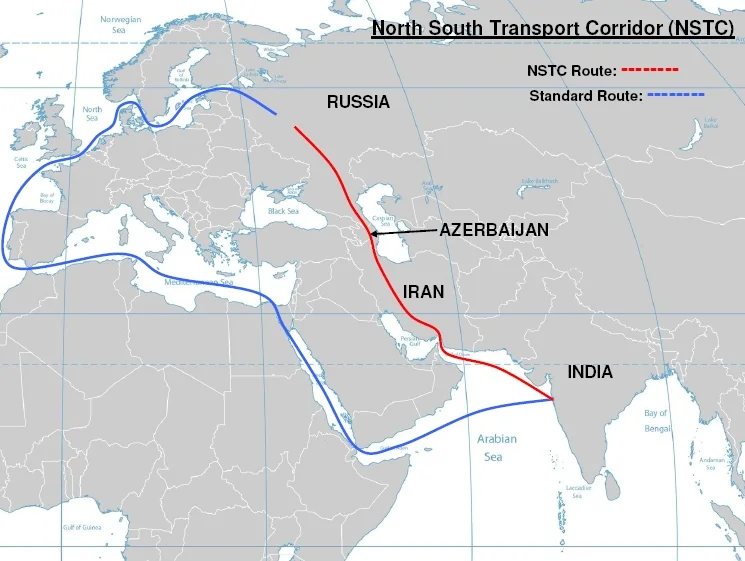
INSTC is a multimodal transport network connecting India via the Indian Ocean, the Persian Gulf, and the Caspian Sea to Russia. The 4500-mile-long corridor, comprising roads, sea lanes, and rail routes, is the shortest and cheapest route linking India and Russia. The project was launched on 12th September 2000, in St. Petersburg with the signing of a trilateral agreement to promote transportation cooperation among member countries. Russia, India, and Iran were the founding members of this venture. The membership rose to thirteen with the addition of ten more countries over the past twenty years.
Why INSTC?
According to the MEA, the annual bilateral trade between India-Russia from April 2020 to March 2021 is valued at USD 9.31 billion. This includes exports to Russia worth USD 3.48 billion and imports from Russia worth 5.83 billion. Major exports from India are pharmaceuticals, electrical machinery, organic chemicals, textiles, tea, and coffee. Major import items are defence equipment, minerals, nuclear power equipment, fertilizers, and inorganic chemicals.
It is to be noted that, despite having genial ties and strategic partnerships for such a long time, both countries could not make up to each other’s top traders list. Undoubtedly, poor connectivity is the prime impediment to the expansion of trade between them. Thus, from a bilateral perspective, INSTC is expected to be a corridor to facilitate an uninterrupted flow of goods between the northern and southern partners.
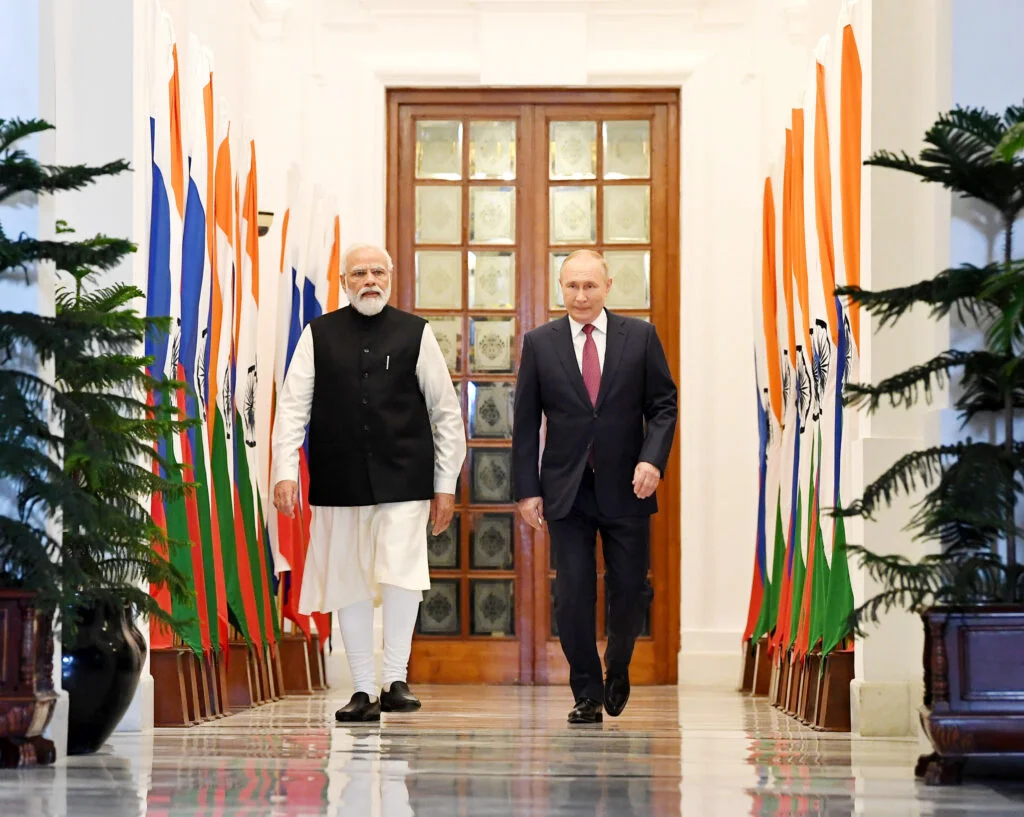
However, since 2002, INSTC’s construction has taken almost two decades to complete. Compared with other such projects, the pace at which INSTC has progressed is not commendable. Nevertheless, because of the recent regional developments like the political instability in Afghanistan, US sanctions on Russia and Iran, and their likely impact on the Indo-Russian supply chain, INSTC is not just an alternative but a necessity. Besides, the Suez Canal blockage in 2021, which cost the world economy a hefty sum of 9 billion USD, undoubtedly raised the profile of INSTC, a better choice of the multimodal transit corridor.
How will INSTC boost Indo-Russian trade?
1. Faster and cheaper transport
The INSTC is the shortest and fastest route linking India and Russia. India and Russia aim to achieve the annual trade target of 30 billion USD by 2025. Till now, the largest share of trade is by arms sales. Both parties need to double the transaction to reach the 30 billion target from the current 9.1 billion in three years.
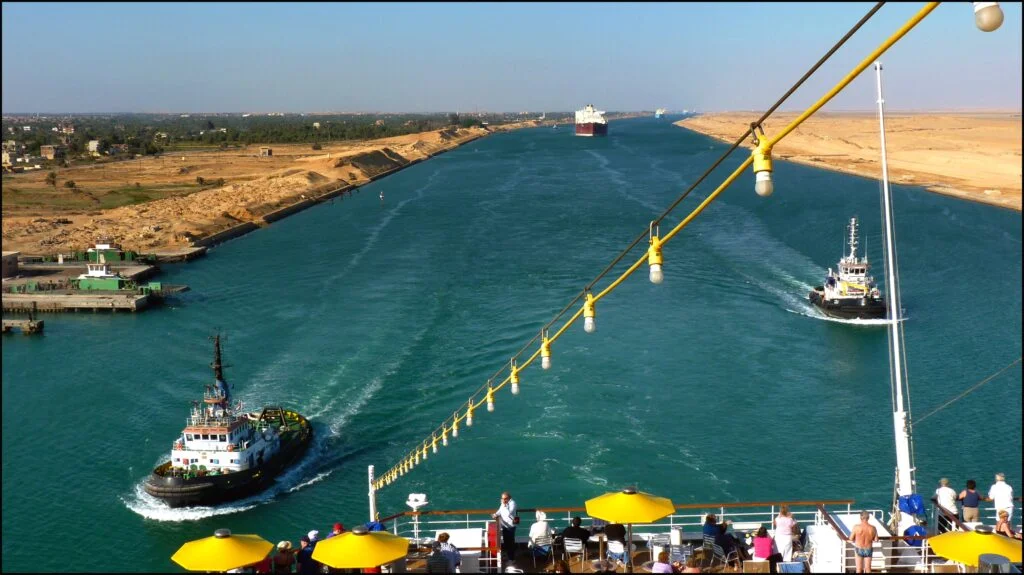
The INSTC bypasses the Suez Canal making India-Russia trade easier than before.
According to the studies conducted by the Freight Forwarders’ Association of India in 2014, INSTC economic corridor can reduce the carriage cost between Moscow and Mumbai by 30%. It can also reduce the transit time of 45-60 days via the Suez Canal route by half. The reduction in cost and time will lead to enhanced freight movement through the corridor, which will be converted into a larger volume of trade.
Parallel to the INSTC, the proposal for building Chennai-Vladivostok Maritime Corridor (CVMC) is under discussion. The maritime corridor will provide a safe passage of 10,000 km from the eastern ports of India to the oil-rich Russian Far East. Russia expects to export crude oil to India directly through this route. Additionally, lower transportation costs enable Indian and Russian products to compete in the Eurasian market, where Chinese products dominate.
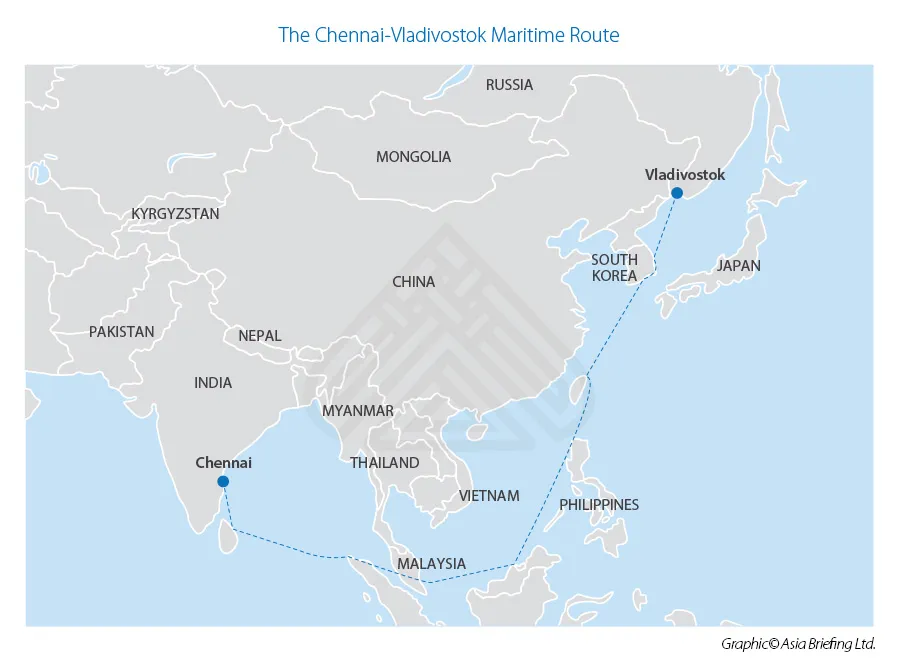
Infrastructure development along the route is another contribution of this project. The INSTC also offers immense prospects for cooperation in intermodal logistics services. In the year 2021, the total cargo turnover rose to 46.5%. If they are willing to collaborate further, financial benefits can be accrued by creating new border checkpoints and cargo consolidation terminals at respective locations.
2. Supply-chain resilience
Building a resilient supply chain bridging north and south of the continent was the intention behind the INSTC initiative. Earlier, starting from India, the carriage had to pass through the territory of Pakistan to reach Central Asia and from there to Russia. Fear of terrorist activities and the political tension between India and Pakistan made it extremely difficult to conduct uninterrupted freight traffic. Moreover, New Delhi and Moscow are always suspicious of Pakistan’s relations with USA and China.
With the actualization of the China-Pakistan Economic Corridor (CPEC), China can now easily access the Arabian Sea. This development was worrisome for India. Similarly, given the sanctions, Islamabad’s relationship with the USA is not viewed positively by Russia. Therefore, as INSTC can bypass Pakistan, it will eliminate a significant hurdle to supply chain resilience for India and Russia.
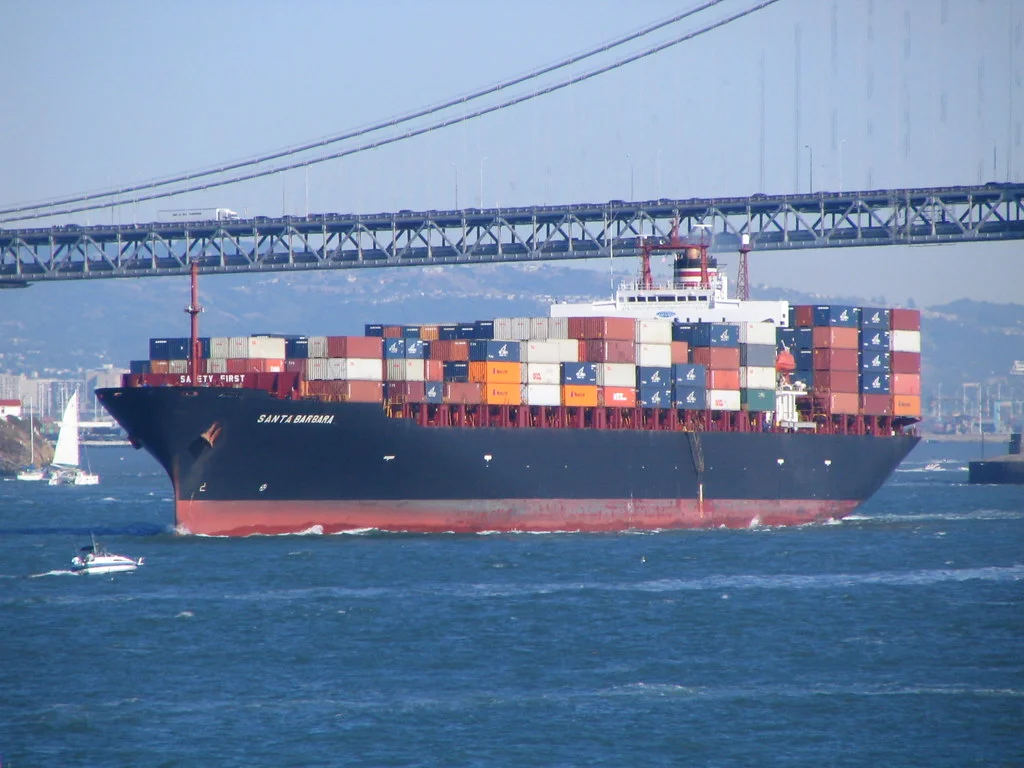
Another feature of INSTC which contribute to supply chain resilience is the circumvention of major transportation bottlenecks. As in the case of the Suez Canal, a blockage can cost billions of dollars a day for all parties involved. The Chabahar and Bandar Abbas ports under INSTC are equipped to handle all the cargo movement along the corridor exclusively. It completely rules out the probability of having infrastructure and operational bottlenecks midway. It ensures the reliability of the passage. Shorter distance and faster delivery make an economic corridor an ideal choice.
3. Opening up of new markets
Indian trade with Russia has so far been restricted to defence production and fuels. Through INSTC, India intends to transform the trade deficit with Russia by sending vegetables like onion, apparel, tea, and coffee in massive amounts, which are in high demand in Russia. High competitiveness gained through INSTC allows India and Russia to enter new unfulfilled markets, specifically in Iran, Central Asia, and Northern Europe. Once stable commercial relations are established, it will provide ample information on the market conditions in each state. Unexplored markets hold substantial potential for direct and indirect investments for Russian and Indian entrepreneurs.

Moreover, access to the Commonwealth of Independent States (CIS) markets is vital for India. Presently, India’s exports to the region are largely pharmaceuticals, textiles, and edibles. It constitutes only less than 1% of total exports to CIS. They are crude oil, gas, food items, fertilizers, and heavy machinery for Russia. With cheaper connectivity, both states can diversify trade to cater to the domestic demands of this part of the world.
INSTC in economic development
The INSTC has thirteen member states. Apart from Russia, India, and Iran, it includes Kazakhstan, Kirgizstan, Tajikistan, Ukraine, Turkey, Armenia, Azerbaijan, Syria, and Oman.
The balanced tariff policy of INSTC offers every member an equal opportunity to benefit from improved market access. It envisions advancing the transportation services tailored to goods and passengers for all the member states. Each participating state can develop itself into a transit and manufacturing hub. They can harness enormous investment for expanding transit facilities by constructing auxiliary provisions like link roads, ensuring route security, and ecological safeguarding.
In India, the cities of Nagpur and Bhivandi are recognized as budding logistical hubs with a projected capacity of about 30 million tons a year. Shortly, Azerbaijan and Iran will likely evolve into transit hubs complimenting the multimodal corridor.
India is the world’s fifth largest energy consumer, and Russia is a top oil and natural gas exporter. India’s share of global consumption is 4.6%, a significant sum. For that reason, the possibility of Russia building oil pipelines along the corridor cannot be ruled out. Russia can significantly benefit by quenching India’s energy thirst in the coming years. Greater connectivity of INSTC can stimulate an unhindered flow of energy resources within the region.
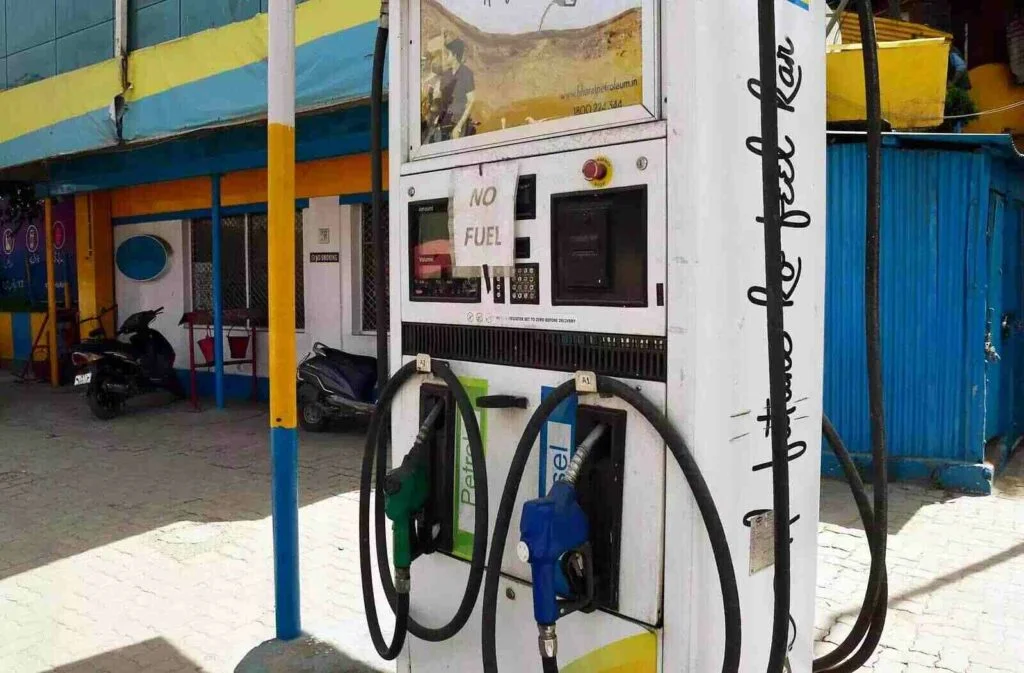
The member states can develop trade agreements to formalize energy transfer among themselves. It will help INSTC members to achieve energy security. Unlike other grand economic and infrastructure projects, the idea of INSTC was embedded in an equality-based approach. This provides all members with a level playing- field. Its success depends on the commercial gains accrued to member countries.
Conclusion
Amidst all the political and geo-economic developments in the region, ranging from South Asia to Northern Europe, the future of INSTC seems promising. The number of participating countries is likely to increase. Bulgaria holds observer status, and the Baltic States are interested in becoming members. Negotiations are underway for a possible synchronization with Ashgabat Agreement and North-Sea Baltic Corridor.
Though ongoing Russia- Ukraine has worsened the economic relations between Russia and Northern Europe lately, it has also shown the world the importance of supply chain resilience. Given the sanctions and the dominance of the Chinese New Silk Route, it is pivotal for Russia and India to strengthen an alternative channel to expand their commerce, both at bilateral and multilateral levels.
Read yet another interesting article on the India-Russia relationship here!
About the Author

Anaina M Raj is a freelance writer and an avid observer of world politics. She tries to explore the alternative narratives and latent dimensions of interstate and intrastate relations. She holds MA in International Politics from Jawaharlal Nehru University (JNU), New Delhi. Her research interests include international security, geopolitics, IR theory, securitisation and foreign policy.

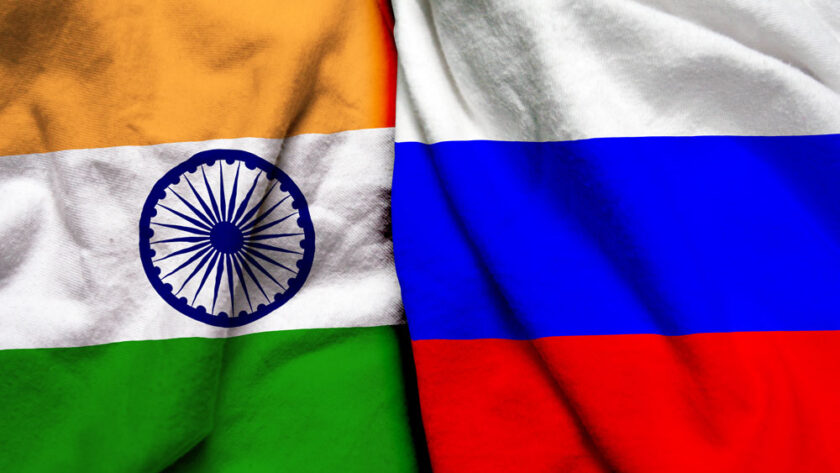



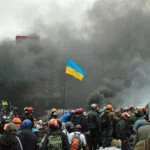

[…] WHY INSTC IS THE FUTURE OF INDO-RUSSIAN TRADE? […]
[…] WHY INSTC IS THE FUTURE OF INDO-RUSSIAN TRADE? […]